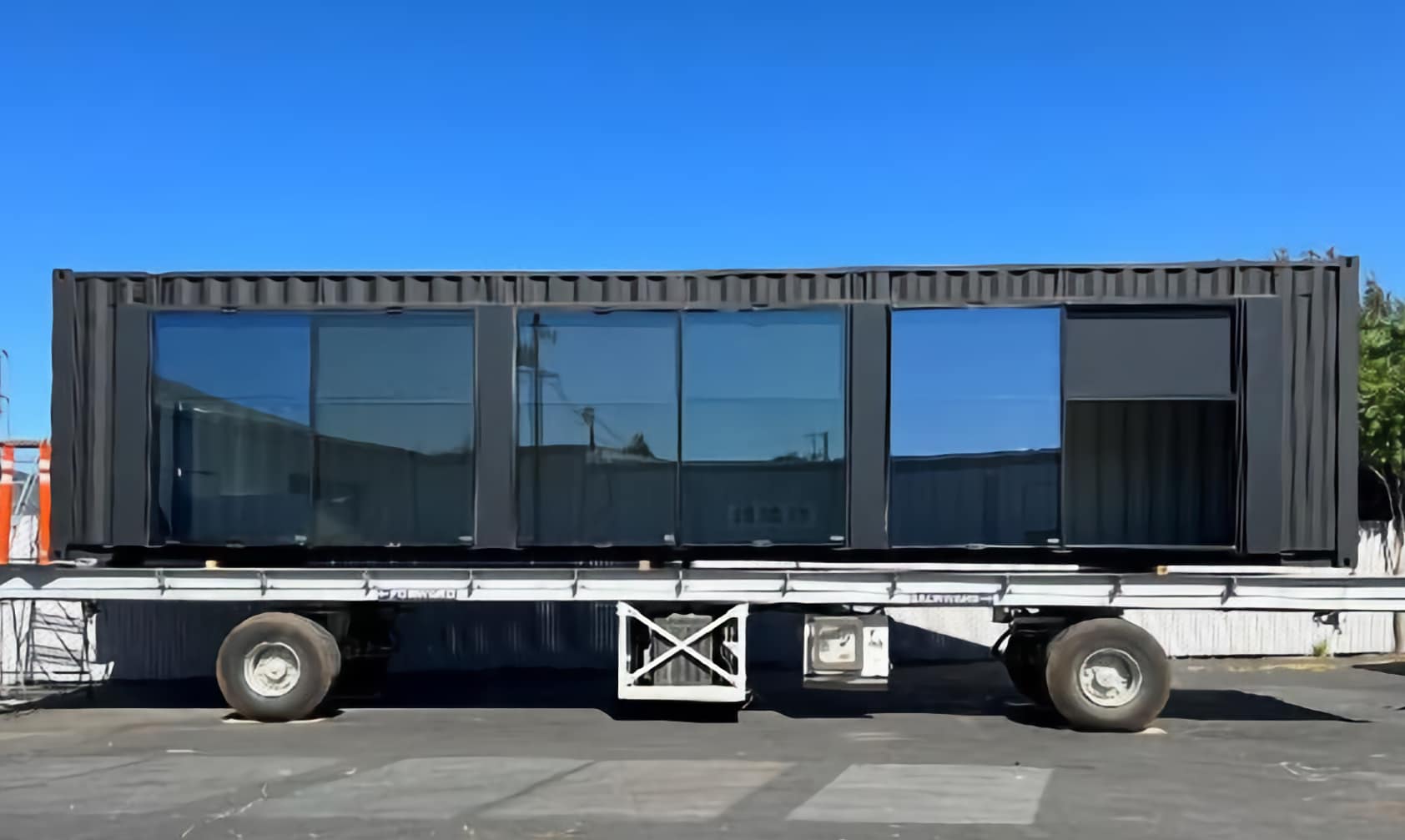The Kit-of-Parts approach to a facade design
Downloads
DOI:
https://doi.org/10.47982/jfde.2023.1.04Keywords:
façade design, design for manufacture & assembly, Engineer-to-Order, Kit-of-Parts, product configuration, customization, circularity, sustainabilityAbstract
Building envelopes are not only the prime element of the exterior aesthetic quality of buildings; they have also become a major driver both for building construction cost and operational performance. The importance of prefabrication is growing in the building industry as it allows faster, high-quality, and cost-effective construction while reducing risks associated with onsite labour. Although prefabrication for structural components is a relatively recent development, it has been widely used in the manufacturing of building envelopes for many years, particularly in the case of unitized curtain wall systems. However, whether using prefabricated components or not, façade design development remains a challenge due to the need for façade engineers to rapidly develop technically viable and financially feasible solutions that achieve the desired architectural design intent. Particularly at the early stages of the design process, the turnaround for multiple iterations is often fast-paced, and abortive work is, therefore, not uncommon.
This paper outlines an approach to addressing this challenge, attempting to bridge the gap between façade design, fabrication, and installation. A new design approach and tools are presented that allow designers to iteratively validate concepts based on a pre-engineered system that is optimized for performance and take fabrication, transport, installation costs, maintenance, and circularity into account. As a result, the tool/design workflow will ensure consistent quality, meeting budgets and timelines while enhancing material efficiency and fostering energy-conscious and circular envelope design approaches.
How to Cite
Published
Issue
Section
License
Copyright (c) 2023 Lisa Rammig, Andrea Zani, Tim Murphy, Isabelle Paparo, Linda Hildebrand, Steve Abbring, Derick Kopreck, Christine Wu, Joyce Lee, Kate Turpin

This work is licensed under a Creative Commons Attribution 4.0 International License.
Authors or their institutions retain copyright to their publications without restrictions.
References
Antunes, R., & Gonzalez, V. (2015). A production model for construction: A theoretical framework. Buildings, 5(1), 209-228. DOI: https://doi.org/10.3390/buildings5010209
Assaf, S. A., & Al-Hejji, S. (2006). Causes of delay in large construction projects. International Journal of Project Management, 24, 349–357. DOI: https://doi.org/10.1016/j.ijproman.2005.11.010
Bach, R., Mohtashami, N., & Hildebrand, L. (2019). Comparative Overview on LCA Software Programs for Application in the Façade Design Process. Journal of Facade Design and Engineering, 7(1), 13–26. https://doi.org/10.7480/jfde.2019.1.2657
Blismas, N., Pasquire, C., & Gibb, A. (2006). Benefit evaluation for off-site production in construction. Construction Management and Economics, 24(2), 121–130. DOI: 10.1080/01446190500184444. DOI: https://doi.org/10.1080/01446190500184444
Boswell, K. (2013). Exterior Building Enclosure – Design Process and Composition for Innovative Facades. John Wiley & Sons. ISBN 978-0-470-88127-9
Cucuzza, M., Masera, G., Iannaccone, G., Mainini, A. G., di Stefano, A. G., Lencioni, L., & Enna, M. (2021). A Panelization Design Tool to Inform Decisions About Façade Geometry and Environmental Performances. In Sustainability in Energy and Buildings 2021 (pp. 529-539). Singapore: Springer Nature Singapore. DOI: https://doi.org/10.1007/978-981-16-6269-0_44
Deniz, O., & Dogan, E. (2014). Building Facade System for Deconstruction. Journal of Sustainable Architecture and Civil Engineering, 3(8), 59–74. DOI: https://doi.org/10.5755/j01.sace.8.3.7231
Durmisevic, E. (2006). Transformable building structures; Design for disassembly as a way to introduce sustainable engineering to building design & construction. [Dissertation (TU Delft), Delft University of Technology]. Cedris M&CC.
Gasparri, E., & Aitchison, M. (2019). Unitised timber envelopes: A novel approach to the design of prefabricated mass timber envelopes for multi-storey buildings. Journal of Building Engineering, 26, 100898. DOI: https://doi.org/10.1016/j.jobe.2019.100898
Goulding, J. S., Rahimian, F. P., Arif, M., & Sharp, M. (2014). New offsite production and business models in construction: priorities for the future research agenda. Architectural Engineering and Design Management, 11(3), 163–184. https://doi.org/10.1080/17452007.2014.891501 DOI: https://doi.org/10.1080/17452007.2014.891501
Kagioglou, M., Cooper, C. L., Aouad, G., & Sexton, M. (2000). Rethinking construction: the Generic Design and Construction Process Protocol. Engineering, Construction and Architectural Management, 7(2), 141–153. https://doi.org/10.1046/j.1365-232x.2000.00148.x DOI: https://doi.org/10.1046/j.1365-232X.2000.00148.x
Kassema, M., & Mitchell, D. (2015). Bridging the gap between selection decisions of facade systems at the early design phase: Issues, challenges and solutions. Journal of Facade Design and Engineering, 3(2), 165–183. https://doi.org/10.7480/jfde.2015.2.1016 DOI: https://doi.org/10.3233/FDE-150037
Klein, T. (2013). Integral Facade Construction: Towards a new product architecture for curtain walls. A+BE | Architecture and the Built Environment, 3(3), 1–298. https://doi.org/10.7480/abe.2013.3.611 DOI: https://doi.org/10.59490/abe.2013.3.738
Knaack, U., Klein, T., Bilow, M., & Auer, T. (2007). Façades: Principles of Construction. Birkhaeuser Architecture.
Lawson, B. (1997). How Designers Think: The Design Process Demystified (3rd ed.). Architectural Press.
McKinsey & Company. (2017). Reinventing construction through a productivity revolution. https://www.mckinsey.com/industries/capital-projects-and-infrastructure/our-insights/reinventing-construction-through-a-productivity-revolution#. Accessed date: 15/06/2020.
McKinsey & Company. (2019). Modular construction: From projects to products. https://www.mckinsey.com/capabilities/operations/our-insights/modular-construction-from-projects-to-products. Accessed date: 05/01/2024.
Montali, J., Overend, M., Pelken, P. M., & Sauchelli, M. (2018). Knowledge-Based Engineering in the design for manufacture of prefabricated façades: current gaps and future trends. Architectural Engineering and Design Management, 14(1-2), 78-94. DOI: https://doi.org/10.1080/17452007.2017.1364216
Montali, J., Sauchelli, M., Jin, Q., & Overend, M. (2019). Knowledge-rich optimisation of prefabricated façades to support conceptual design. Automation in Construction, 97, 192-204. DOI: https://doi.org/10.1016/j.autcon.2018.11.002
Mule, J. Y. (2012). Design for Disassembly Approaches on Product Development. International Journal of Scientific & Engineering Research, 3(6), 996-1000.
Otter, D., & Prins, M. M. (2001). Fast-tracking by high performance design teams. CIB World Building Congress, Wellington, New Zealand.
Pottgiesser, U., & Strauss, H. (2013). Product development and architecture: Visions, Methods, Innovations. Birkhauser. DOI: https://doi.org/10.1515/9783034608824
Rocha, P. F., Ferreira, N. O., Pimenta, F. T., & Pereira, N. B. (2022). Impacts of prefabrication in the building construction industry. Encyclopedia, 3(1), 28–45. https://doi.org/10.3390/encyclopedia3010003 DOI: https://doi.org/10.3390/encyclopedia3010003
The Economist. (2017). The construction industry’s productivity problem. https://www.economist.com/leaders/2017/08/17/the-construction-industrys-productivity-problem. Accessed date: 10/05/2019.
Whole Building Design Guide. (2016). Curtain Wall. https://www.wbdg.org/guides-specifications/building-envelope-design-guide/fenestration-systems/curtain-walls. Accessed date: 15/06/2020.
Zani, A., Mainini, A. G., Blanco Cadena, J. D., Schiavon, S., & Arens, E. (2018). A new modeling approach for the assessment of the effect of solar radiation on indoor thermal comfort. In Proceedings of 2018 Building Performance Analysis Conference and SimBuild (pp. 181-188).
